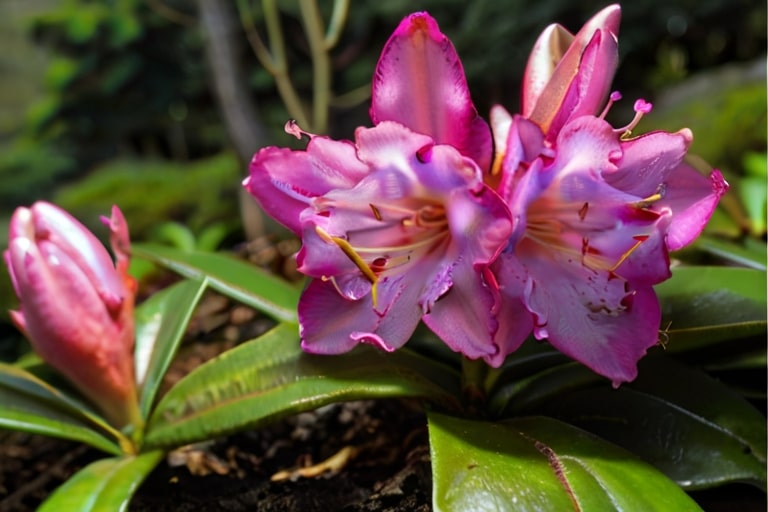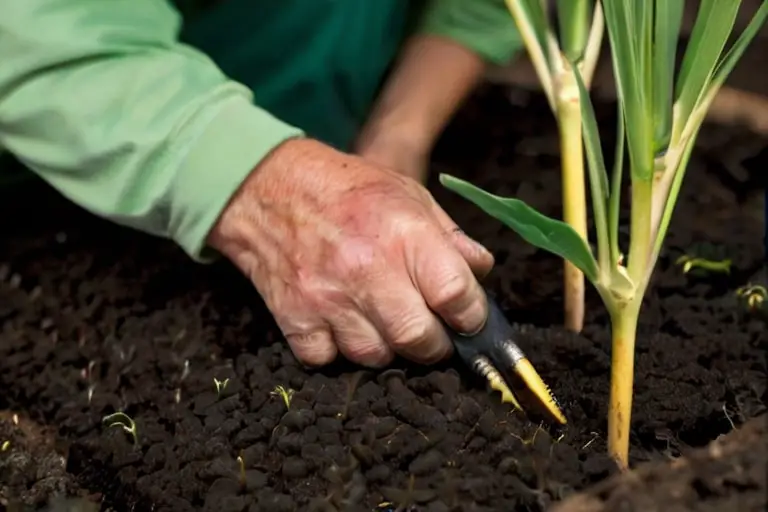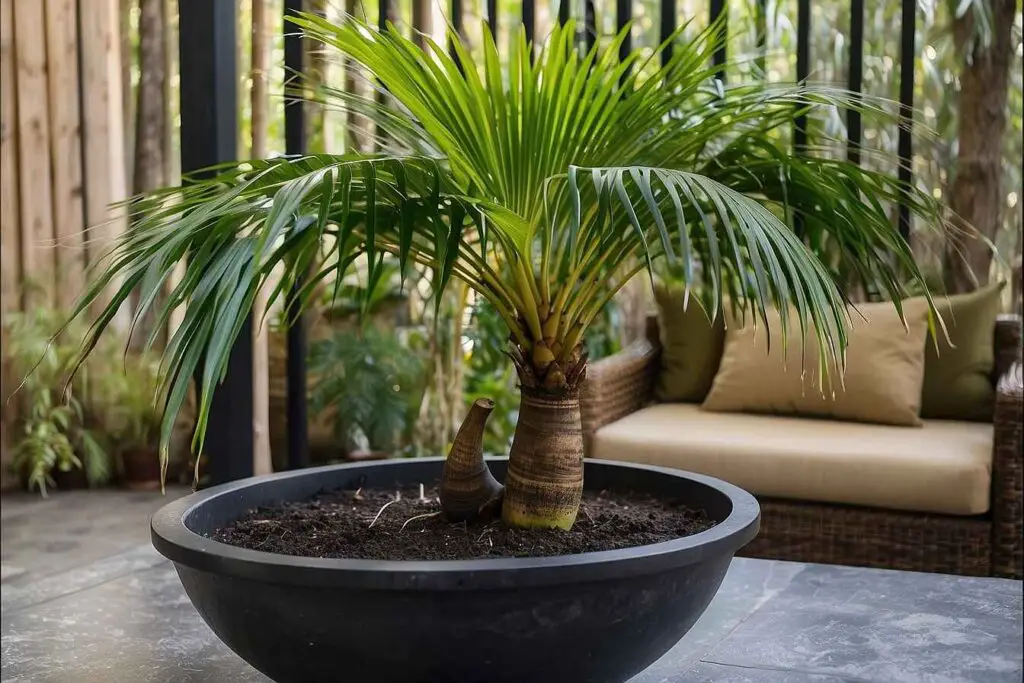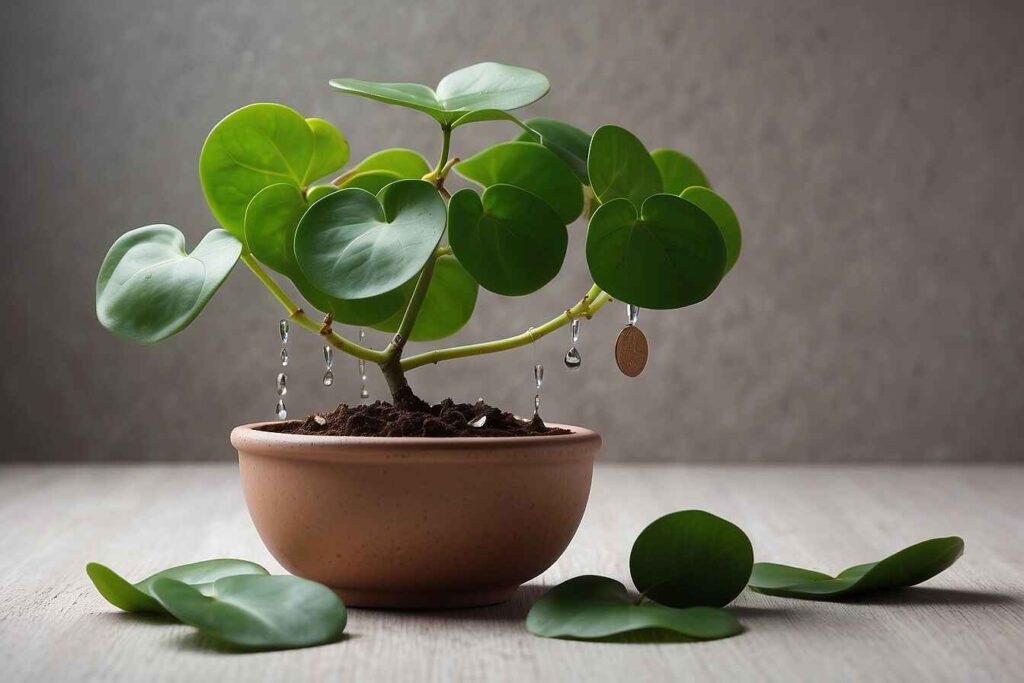Welcome to the wonderful world of growing rhododendron flowers. Watch as stunning buds turn into beautiful gardens full of color and life. Rhododendrons have beautiful flowers and green leaves. They add lots of colors to gardens all year round.
In this guide, we explore how to propagate rhododendron flowers. All gardeners can create new rhododendrons from their favorites. Whether you’re new or experienced in gardening, this guide helps you propagate blooms. Embark on an exciting journey of discovery and growth. We will explore the secrets of rhododendron propagation.
Rhododendron Propagation
Gardeners can create more beautiful rhododendron plants by learning how to propagate them. It adds variety to their gardens. Understanding the process intricacies unlocks propagation secrets. Enjoy the rewards it brings.
Rhododendron propagation involves using parts of the parent plant to grow new plants. Gardeners can save favorite traits and expand collections without buying new specimens.
To successfully grow new plants, you need to choose the right parts from the original plant. Rhododendron cuttings, essential in how to propagate rhododendron are usually taken from strong, healthy stems to start new plants. Choose cuttings from new growth or semi-hardwood. Ensure they are healthy without disease or stress.
To propagate rhododendrons successfully, include leaf nodes in the cuttings. Leaf nodes, where leaves attach to the stem, are essential for the emergence of new roots. Gardeners can boost root success by having at least one leaf node on each cutting.
Gardeners frequently use rooting hormone to accelerate the rooting process in how to propagate rhododendron. This material helps roots form in plant cuttings for quicker establishment. It promotes robust growth. To boost success, add rooting hormone to the base of rhododendron cuttings.
Best Time for Taking Cuttings
For rhododendron propagation to be successful, timing is essential. Gardeners can boost their success by knowing when to take cuttings. This helps plants grow strong roots. The ideal periods to take cuttings are broken down as follows: .
Importance of Timing
- Timing is crucial for plants to grow strong roots.
- Taking cuttings at the proper time helps plants get the energy they need to grow roots and thrive in a new place.
Differentiating between Softwood and Hardwood Cuttings
- Softwood cuttings come from new, flexible growth. Softwood cuttings grow quickly and easily. Handle them with care since they are delicate.
- Hardwood cuttings are removed from older, woody stems. Hardwood cuttings from older stems are tougher than softwood cuttings. They may take longer to grow roots and need extra care for successful growth.
Suggestions for the Ideal Timing
- Spring: Softwood cuttings are best taken in the spring. Plants are actively growing during this time, and softwood cuttings are plentiful. Many gardeners prefer spring because these cuttings grow fast and well.
- Winter: The best season to take hardwood cuttings, an essential step in how to propagate rhododendron, is in the winter. Hardwood cuttings are more successful than softwood cuttings. Plant growth may be latent during this season. To help roots grow better, they may require a controlled setting such as a greenhouse.
The Surroundings and Maintenance of rhododendron propagation
Creating a good environment is essential in the process of how to propagate rhododendron. Proper care is necessary for propagation success. A simple guide to help rhododendrons grow from cuttings and handle common issues.
Humidity and Temperature
- Humidity is ideal for rhododendron cutting growth. You might need to cover the cuttings with a plastic dome or bag to keep the moisture levels up.
- Between 65°F and 75°F (18°C and 24°C) are the ideal temperatures for rooting cuttings. Extremes in temperature can slow down root growth when growing cuttings.
Watering and Light
- The soil should be damp, not dry or soaked. Too much water causes root rot and problems, so water cuttings carefully but often.
- Give the cuttings indirect light. Direct sun is too strong and can hurt the new delicate growth. A bright spot with some shade works best for roots to grow well.
Keeping the Environment Friendly
- Keep an eye on moisture in the air. Make changes so baby plants can grow roots well.
- Use a tray with water or spritz cuttings sometimes. This helps keep the right dampness.
- Look at the soil often. Give the little plants drinks so they don’t get too dry.
Taking Care of Issues
- Stop Moldy Growth: Allow good airflow near cuttings. Don’t crowd them. Keep things tidy to stop fungus troubles.
- Take Your Time: Roots sprout slowly, so wait patiently. Don’t disturb cuttings much. Check on them, sure, but excessive handling harms root progress.
Step-by-Step How to Propagate Rhododendron Process

Rhododendrons multiply efficiently with careful observation and following specific procedures. Here are the steps for successful rhododendron propagation.
Selecting a Parent Plant
Pick a strong, thriving rhododendron bush to obtain cuttings. Seek out robust growth, vibrant leaves, and no signs of bugs or disease. The parent plant’s vigor greatly impacts how well the cuttings survive.
Cuttings
Use clean, sharp pruners to cut pieces 4-6 inches long from the parent plant. For better rooting, angle the cut 45 degrees below a leaf node. The cuttings should come from healthy, semi-hardwood or new growth that isn’t stressed or diseased.
Preparing the Cuttings
You’ll want to take leaves off the bottom of the cutting. This decreases moisture loss and lets photosynthesis happen. Cut big leaves in half if you need to further reduce transpiration. Dip the cut end in rooting hormone gel or powder. This encourages root growth.
Soil Preparation and Planting
Proper drainage and moisture management are crucial. A well-draining, perlite-rich potting mix is ideal. Ensure rooting hormone contact with soil by planting cuttings 1-2 inches deep. Gently firm the surrounding soil to provide stability and encourage root development.
Creating a Suitable Environment
Keep the humidity levels high to aid rooting – cover the pot in plastic or a little greenhouse. For healthy plant growth, without overheating or stress, put the pot in bright, indirect light. Warm temperatures promote cutting development.
Watering and Care
The ground should remain wet, but avoid soaked conditions. Too much water may cause the cuttings decay. Consistently examine the cuttings for new growth, adjusting watering as needed. Handle carefully to prevent damage – don’t disturb them excessively.
Observation and Replacement
Check cuttings after weeks or months by gently tugging to see if roots formed. Once strong roots develop, plant cuttings in garden or separate pots. Use well-draining soil. Provide regular care to help cuttings grow and establish.
Timing, Cleanliness, and Patience
- Morning works best for taking cuttings, as plants are hydrated then. Cuts thrive in those conditions.
- Keep tools and pots clean, preventing disease. Healthy cuttings rely on cleanliness.
- Developing new plants takes time, so have patience. Don’t rush it, monitor closely while cuttings establish themselves slowly.
Advanced Methods for Propagating Rhododendrons

If regular stem cuttings aren’t working in your efforts of how to propagate rhododendron, try other tricks. Layering and air layering let you grow rhodies differently – these are advanced moves. But be careful! You need to think hard about conditions and aftercare. Here’s the full scoop on these special techniques:
Layering
Encourage a stem to develop roots while attached to the parent plant. This promotes successful propagation through layering.
Step-by-Step Guide: .
- Select a strong, bendy lower branch from the rhododendron that can be easily bent to the ground.
- Prepare the branch by gently scraping the part touching the soil to help roots grow.
- To root a branch, bend it to the ground and cover the injured part with soil. Secure it with a stone or peg.
- Encouraging Root Growth is important. Keep the soil damp for roots to grow and keep the branch connected to the plant.
Air Layering
Air layering is a complex method. It roots a branch on the parent plant, offering a different way to grow new plants.
Step-by-Step Guide:
- Choose a strong branch that’s one year old and good for air layering.
- Wound the branch by making a slanted cut one-third through it. Place a small piece of wood or plastic to keep the cut open.
- To root a branch, cover the injury with damp moss and plastic to keep it humid.
- Seal the plastic wrap ends with tape. This keeps the moisture and helps watch for roots in the moss.
Considerations for Success
Both methods, regular stem cuttings and advanced techniques like layering and air layering in the process of how to propagate rhododendron need time as roots can take a few months to grow. Regularly check the plant’s health. Make sure it has enough water and light. Take care of the new plants by watering them and watching them grow in their new home.
For more articles relating to weeds, here’s a link to How to propagate majesty palm that you may enjoy.


“Your blog has provided me with a wealth of priceless information! After searching the internet for a long time, I found exactly what I needed on your website. Your advice helped me learn and want to become a better gardener. Thank you for sharing your knowledge and making it easy for plant lovers like me. Keep up the fantastic work!” .
i truly say that this article is very easy to understand and really helpful info.